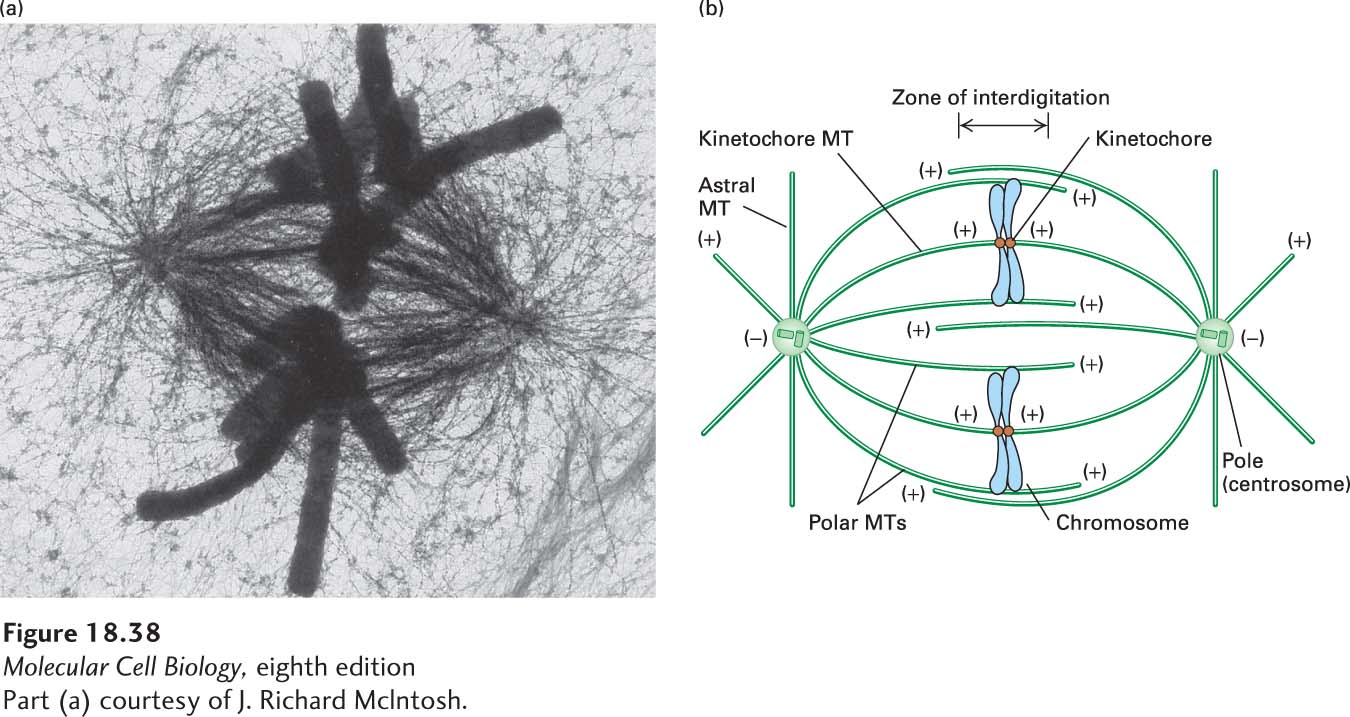The Mitotic Spindle Contains Three Classes of Microtubules
Before we discuss the mechanisms involved in the remarkable process of mitosis, it is important to understand the three distinct classes of microtubules that emanate from the spindle poles, which is where their (−) ends are embedded. The astral microtubules extend from the spindle poles to the cell cortex (Figure 18-38). By interacting with the cortex, the astral microtubules perform the critical function of orienting the spindle to the axis of cell division. The kinetochore microtubules function by a search-and-capture mechanism to link the spindle poles to the kinetochores on sister chromatid pairs. During anaphase A, the kinetochore microtubules transport the newly separated chromosomes to their respective poles. The polar microtubules extend from each spindle pole toward the opposite one and interact in an antiparallel manner. These microtubules are responsible initially for pushing the duplicated centrosomes apart during prophase, then for maintaining the structure of the spindle, and then for pushing the spindle poles apart in anaphase B.

FIGURE 18-38 Mitotic spindles have three distinct classes of microtubules. (a) In this high-voltage electron micrograph, microtubules were stained with biotin-tagged anti-tubulin antibodies to increase their size. The large cylindrical objects are chromosomes. (b) Schematic diagram corresponding to the metaphase cell in (a). Three sets of microtubules (MTs) make up the mitotic apparatus. All the microtubules have their (−) ends at the poles. Astral microtubules project toward the cortex and are linked to it. Kinetochore microtubules are connected to chromosomes. Polar microtubules project toward the cell center with their distal (+) ends overlapping. The spindle pole and associated microtubules is also known as a mitotic aster.
[Part (a) courtesy of J. Richard Mclntosh.]
Note that all the microtubules in each half of the symmetrical spindle have the same orientation except for some polar microtubules, which extend beyond the midpoint and interdigitate with polar microtubules from the opposite pole.
